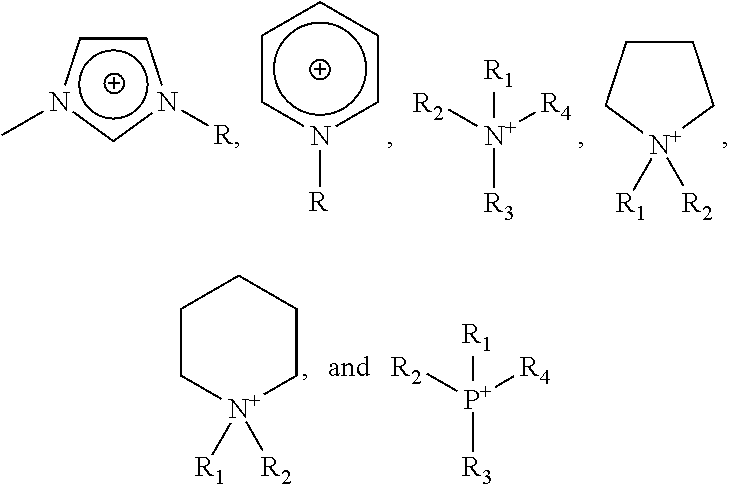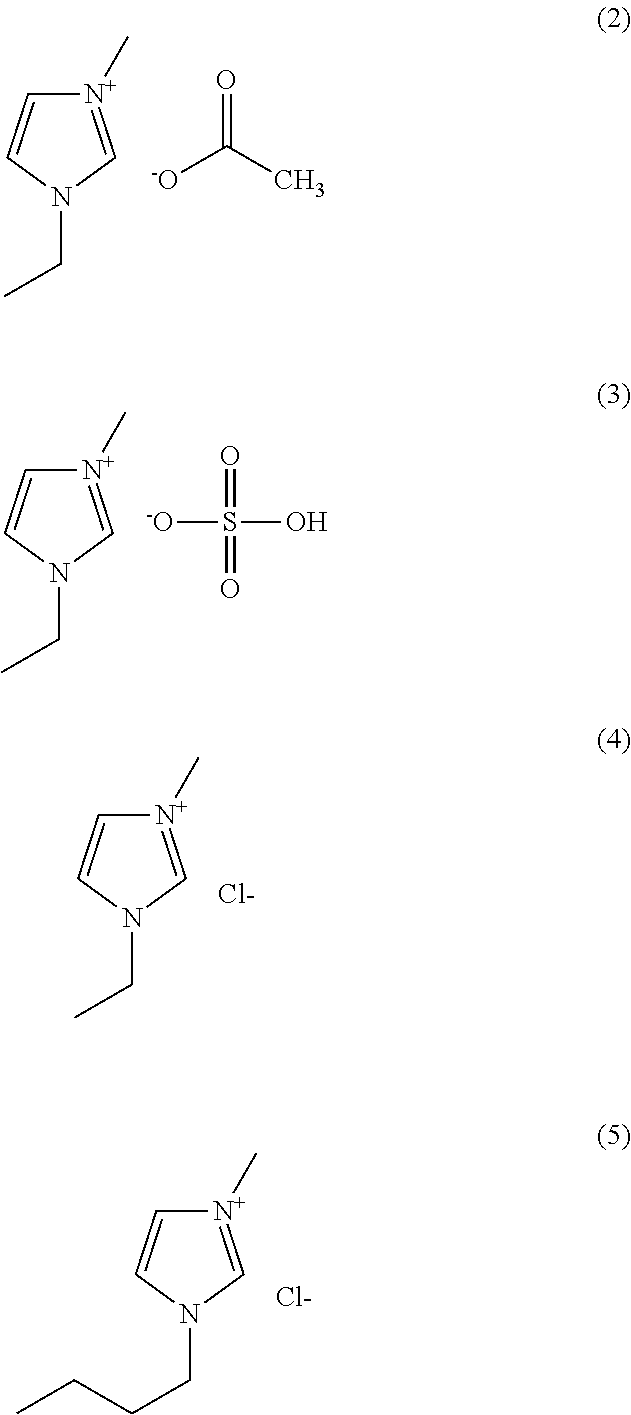Methods for extracting hemicellulose from a cellulosic material
a cellulosic material and hemicellulose technology, applied in the field of extracting hemicellulose from cellulose containing materials, can solve the problems of incompatible with certain industrial uses, high cost of such pulps, and inability to commercially obtain dmdo, and achieve the effect of reducing hemicellulose wood pulp and less hemicellulos
- Summary
- Abstract
- Description
- Claims
- Application Information
AI Technical Summary
Benefits of technology
Problems solved by technology
Method used
Image
Examples
example 1
Extraction With 1-Ethyl-3-Methylimidazoliumacetate (EMIM Ac) / Acetic Acid Extractant Binary System at 120° C.
[0066]0.8 gram of paper grade pulp sample was weighed and put into a 50 ml glass vial with Teflon face lined cap. A pre-calculated amount of EMIM Ac and Acetic Acid (total) were added into the glass vial according to the predetermined extractant weight ratio (EMIM Ac / Acetic Acid) and mixed well with the pulp samples. The sample thus contained a solid / liquid ratio (S / L) of 5%. The glass vials with pulp and extractant solution were placed into a NAPCO® Autoclave (Model 800-DSE autoclave), and the autoclave was set at 120° C. for 1 hr. After the autoclave treatment, the glass vial was left to cool to room temperature.
[0067]The content in the glass vial was transferred to a 50 ml filtration tube (0.45 um pore size filter from Grace) and centrifuged at 6000 rpm for 5 to 10 min with Thermo Fisher MR 23i Centrifuge. 1 micron or 5 micron Dutch wire cloth filter pads were used to repla...
example 2
Extraction With 1-Ethyl-3-Methylimidazoliumacetate (EMIM Ac) / Acetic Acid Extractant Binary System at 95° C.
[0071]Example 2 was prepared using the same process as Example 1, except that the extraction was performed at 95° C. The UV / Vis absorbance is shown in Table 2.
TABLE 3UV / Vis Absorbance at 95° C. for 1 hourEMIM Ac %Acetic Acid %Absorbance @ 277 nmComparative 2—4.7674261.7975251.5175.524.51.4276241.3976.523.51.4277231.3377.522.51.3078221.36Comparative 1—0.93
PUM
| Property | Measurement | Unit |
|---|---|---|
| wt. % | aaaaa | aaaaa |
| wt. % | aaaaa | aaaaa |
| temperature | aaaaa | aaaaa |
Abstract
Description
Claims
Application Information
 Login to View More
Login to View More - R&D
- Intellectual Property
- Life Sciences
- Materials
- Tech Scout
- Unparalleled Data Quality
- Higher Quality Content
- 60% Fewer Hallucinations
Browse by: Latest US Patents, China's latest patents, Technical Efficacy Thesaurus, Application Domain, Technology Topic, Popular Technical Reports.
© 2025 PatSnap. All rights reserved.Legal|Privacy policy|Modern Slavery Act Transparency Statement|Sitemap|About US| Contact US: help@patsnap.com


